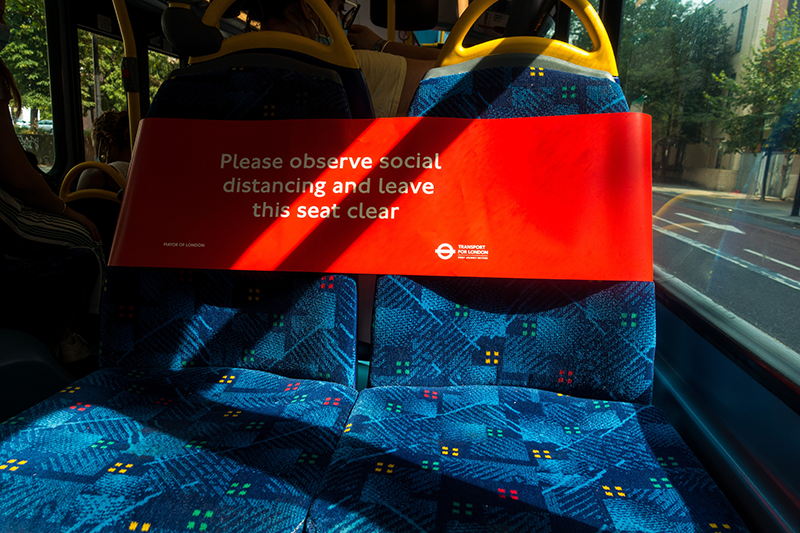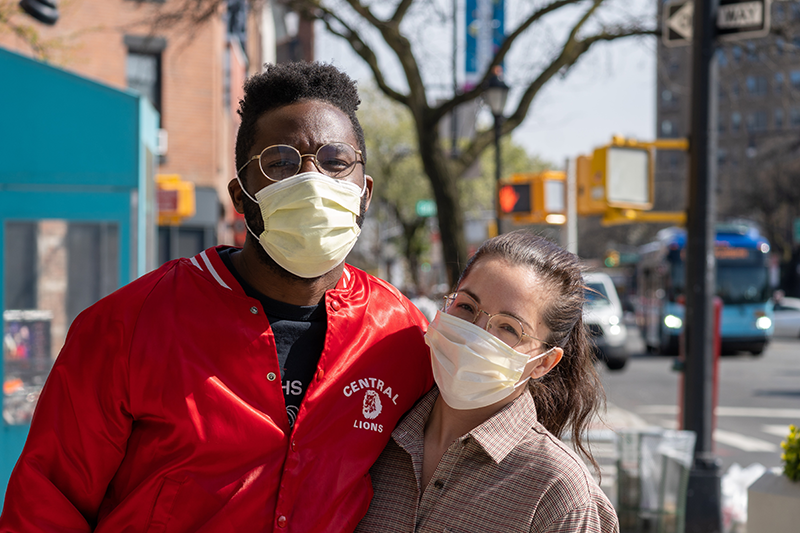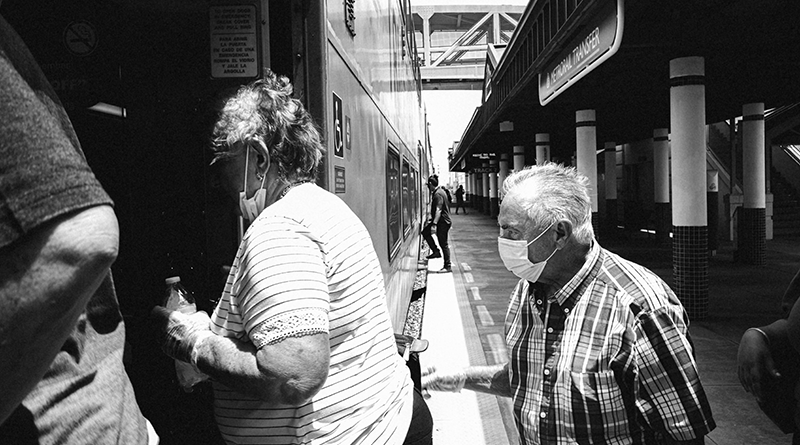frankie cordoba | Unsplash
Access to quality, reliable transportation has a major impact on one’s life. The fortunate can choose to locate in places where they can easily access employment and essential services, including healthcare. Others, for a host of financial and social reasons, cannot so easily obtain the services they require. This disparity of access is one of the most important factors affecting the quality of one’s health. During the COVID-19 pandemic, this disparity has been even more apparent as those living in high-risk areas (and more likely to be working in jobs that cannot be done remotely) have suffered more health impacts from the virus. Solutions related to more reliable transportation options and increased density may lead to greater health equity outcomes regardless of conditions.
In the December 2019 report The State of Transportation and Health Equity, Smart Growth America (SGA) identified major challenges to transportation systems when viewed through a health equity lens, as well as strategies and policies that small- to mid-sized cities and rural regions can adopt to address these challenges. The study begins with a discussion of the underinvestment in transportation infrastructure that characterizes low-income communities. These places typically have poor pedestrian infrastructure that can lead to more pedestrian-vehicle crashes, and reduced ability to engage in outdoor activities resulting in worse physical health among residents. In addition, transit underinvestment in these communities can make access to medical care and food more difficult for seniors, people with disabilities, and other carless residents.
The findings of the SGA report are echoed in recent work by Karaye and Horney, researchers at the University of Delaware. Karaye and Horney used data from the Social Vulnerability Index and COVID-19 case count data to assess the relationship between the case counts and social vulnerability. The researchers found that in the U.S., minority status and language, household composition, and housing and disability predicted COVID-19 case counts. They also found that one factor predicting high COVID-19 rates is poor access to quality transportation. The researchers noted that low-income communities face further risks with COVID-19. For example, they state that two million Americans lack running water at home, which makes disease mitigation through hand washing more difficult. Furthermore, low-income workers frequently lack sick leave, which lowers the feasibility of measures such as quarantining. The confluence of a lack of transportation access, the inequitable circumstances surrounding these communities, and the presence of the COVID-19 pandemic has exacerbated the existing issues in low-income neighborhoods. Addressing these social determinants of health, including access to quality transportation, was determined to be crucial to reducing the inequities of health outcomes both during and after COVID-19.

In the U.S., the issue of residential density has also received a lot of attention during the pandemic, stemming in part from COVID-19’s initial impact on high density urban centers including Seattle and New York City. News articles have focused on reports of people leaving urban centers due to fear of the pandemic, as well as economic considerations. However, researchers at Johns Hopkins and the University of Utah have concluded that areas with a high density of residential units contributes to a reduction in COVID-19 infection and mortality rates. Hamidi, Ewing, and Sabouri theorized that high residential density generally means easier access to improved healthcare infrastructure in urban centers, compared with rural regions where people travel further for medical care. In addition, they suggest that it may be easier to enforce quarantine orders in high density areas. The researchers revisited this topic and found that regional connectivity—meaning counties that are linked economically and socially—presents a more likely factor in the spread of COVID-19 than high residential density. They recommended that communities continue building dense residential units due to the economic, social, and environmental benefits that result.
Research such as this suggests that to achieve positive public health results, cities should continue to pursue policies that promote transit usage, housing density, integrated public spaces, and transit-oriented development both during and following the pandemic. While the pandemic continues, density can help in containing its spread. Equally pressing, however, is what may follow the pandemic—a situation where everyone who can drive to work, does so out of fear, resulting in even worse congestion, poorer air quality, and additional pedestrian-vehicle crashes. Moreover, transit-dependent groups, such as seniors and people with disabilities, will still need access to essential goods and services. High density neighborhoods and transit can help provide the means by which these populations can acquire the goods and services they require.

That said, communities will need to update and implement new policies in order to adjust to pandemic conditions and to protect public health. Leaders can help shape their communities to be more resilient to pandemics in the future. Researchers Pimpalkhute and Pimpalkhute, co-founders of the Eco Endeavourers Network, have explored many of the pertinent issues and present solutions that address the present crisis, protect against future pandemics, improve resilience, and maintain affordability in Putting Public Health into Housing and Town Planning – Opportunity Amidst Challenge for Real Estate Sector in Wake of COVID-19.
They argue that the pandemic should prompt planners to rethink urban design to incorporate public health into present and future development and that this approach includes building an advanced healthcare system and incorporating pandemic preparedness into the public health and real estate sectors. They recommend continuing to build compact, transit-friendly developments for a mixed range of uses, incomes, and demographics. Pimpalkhute and Pimpalkhute advocate for policies to help make these housing developments more affordable, such as implementing eviction protections, increasing allowable densities, raising maximum building heights, and removing parking minimums to unbundle parking costs. They propose that future pandemic preparedness goals include making adequate space for home offices to allow for work-from-home and creating neighborhoods based around walking and biking to promote healthy lifestyles and access to essential services. These initiatives would help lower the risk for vulnerable communities, including the elderly and lower-income groups, and promote public health through indirect methods, such as reducing emissions as a result of decreased congestion and promoting green open spaces.

The SGA study also presented solutions to help achieve equitable transportation access and health outcomes across all communities:
- Reframe the transportation conversation around issues that people care about, such as freedom of movement and mode choice
- Allocate transportation resources and funding equitably at all levels of government
- Improve the quality and diversity of transportation leadership to include those who are committed to a people-centric transportation vision
- Prioritize historically disenfranchised communities in transportation decision-making
- Work in unison to provide people-focused infrastructure
- Invest in communities without displacing current residents
These solutions require elected officials, transportation professionals, land use agencies, advocates, and funders to collaborate to create a more equitable transportation network. Improved access to transportation, integrated public spaces, and an enhanced public health system can help cities achieve improved health outcomes across all communities, both during and following the COVID-19 pandemic.
Cited Research
Hamidi, S., Ewing, R. and Sabouri, S. 2020. Longitudinal Analyses of the Relationship Between Development Density and the COVID-19 Morbidity and Mortality Rates: Early Evidence from 1,165 Metropolitan Counties in the United States. Health & Place. 64, p.102378.
Hamidi, S., Sabouri, S., and Ewing, R. 2020. Does Density Aggravate the COVID-19 Pandemic? Journal of the American Planning Association. June, pp.1-15.
Karaye, I., and Horney, J. 2020. The Impact of Social Vulnerability on COVID-19 in the U.S.: An Analysis of Spatially Varying Relationships. American Journal of Preventive Medicine, 59(3), pp.317-325.
Pimpalkhute, P. and Pimpalkhute, S. 2020. Putting Public Health into Housing and Town Planning – Opportunity Amidst Challenge for Real Estate Sector in Wake of COVID -19. Eco Endeavourers Network, pp.1-13.
Smart Growth America. 2020. The State of Transportation and Health Equity. Washington, D.C.

